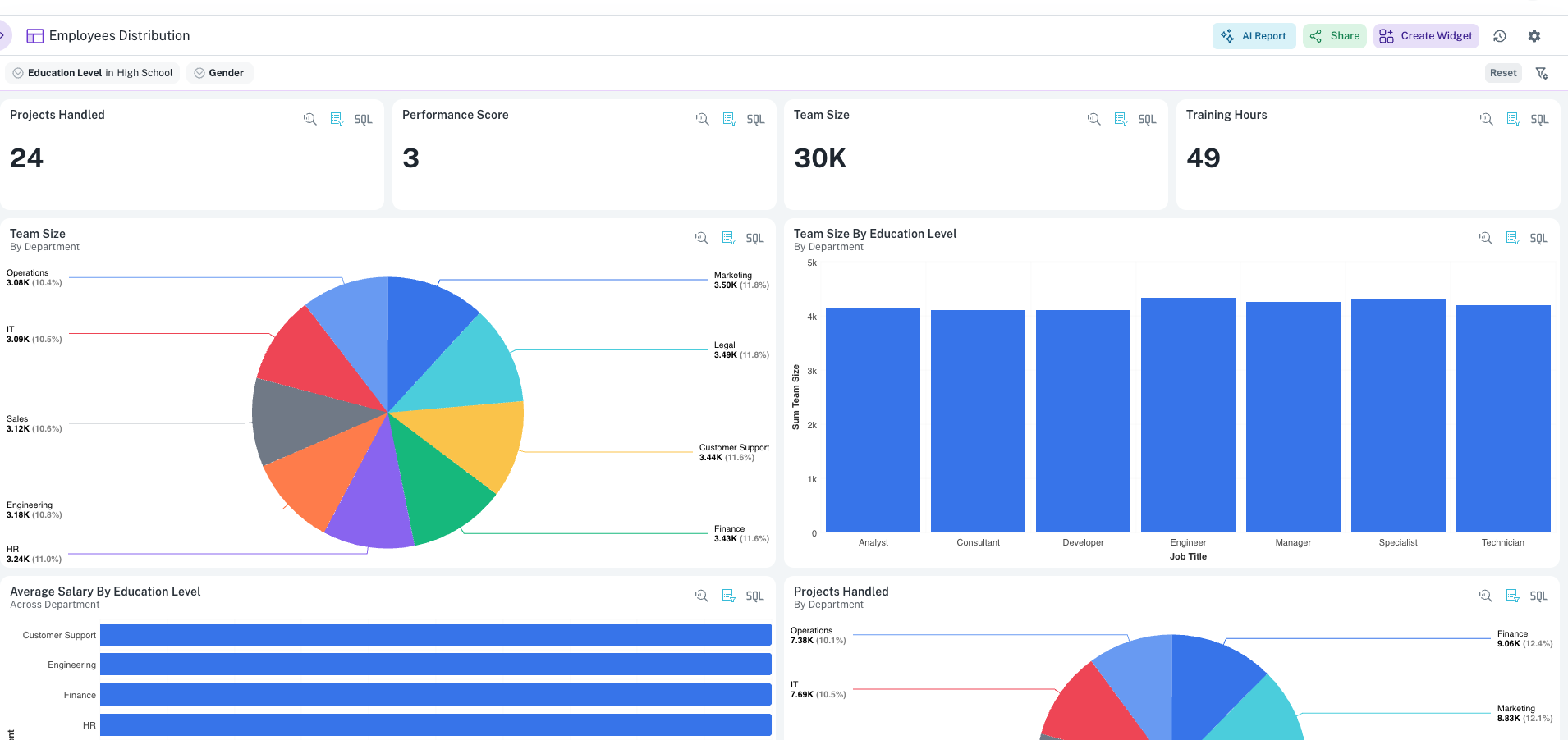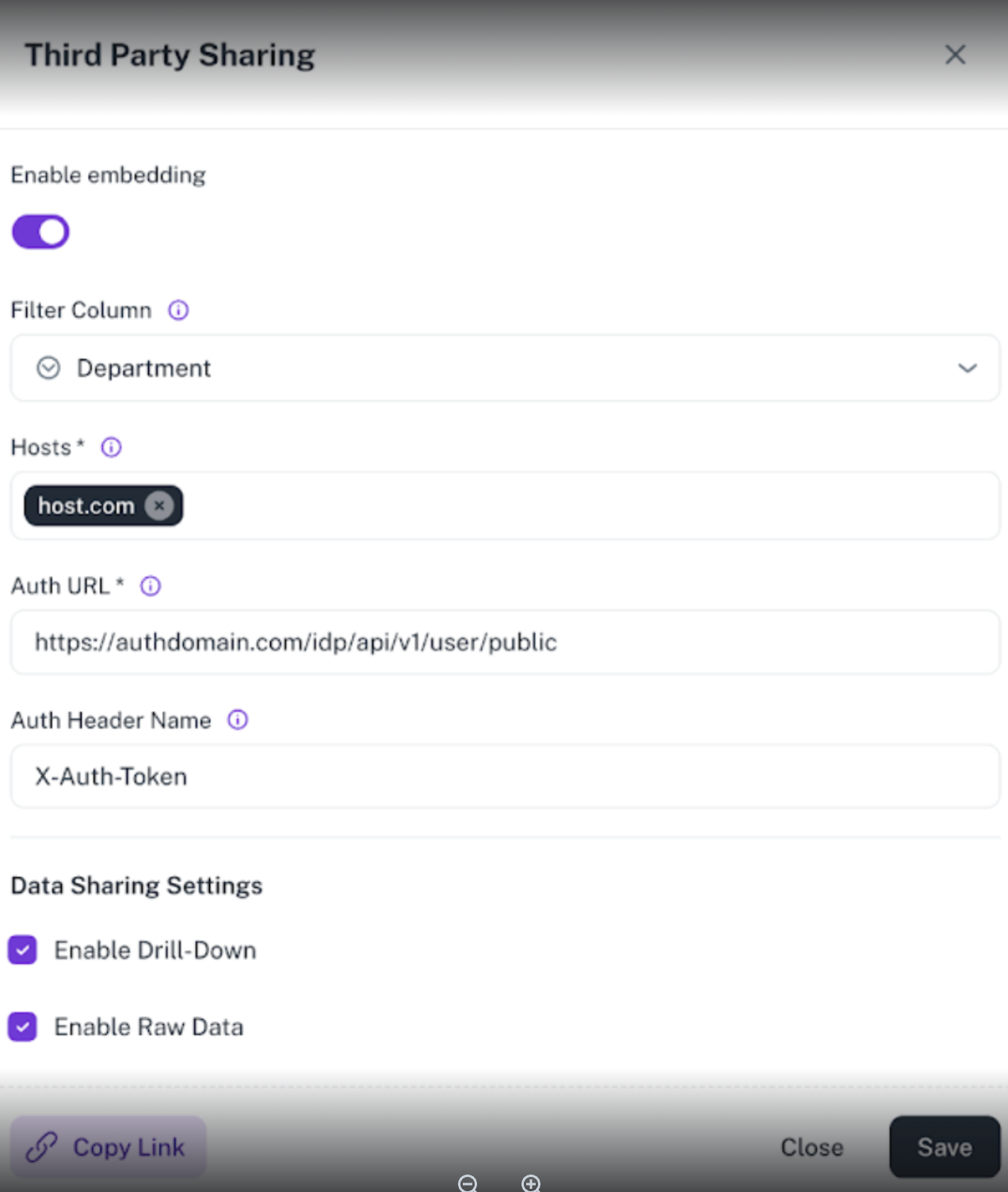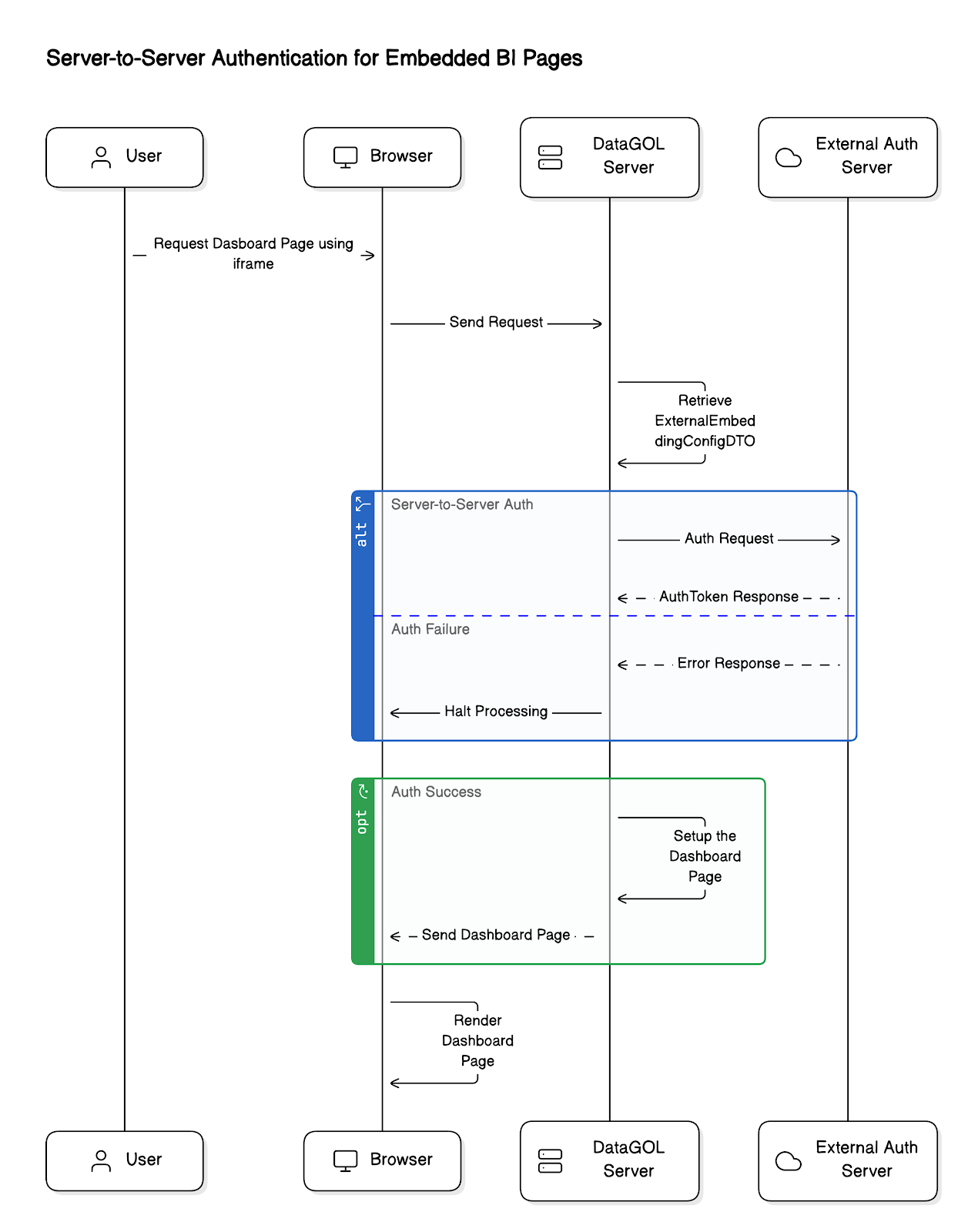Embedded Analytics
External Embedding using an iframe for dashboard pages
This document outlines the external embedding process for Business Intelligence (Dashboard) pages. It describes the setup, requirements, server-to-server authentication mechanism, and the data flow between the browser, DataGOL Server, and external auth server. This solution ensures secure and seamless embedding of Dashboard pages into an external application.
Data setup on workspace
Before we start external embedding for dashboard pages, a few prerequisites need to be met before enabling third-party sharing using iframe.
Data scalingetup
-
Leverage the Lakehouse and Workbook module on the DataGOL platform to organize your data models from different data sources into a Workspace.
-
Once the data is imported into the Workspace, the data can be seen within the Workbooks module in the workspace.
-
Make sure the column types are set appropriately. This is very important as it could impact the BI capabilities of your data.
DataGOL recommends making these workbooks delete protected.
Here is a sample view of the workbook: delete protected workbook
Dashboard setup
Now we can set up the dashboard pages powered by the data present in the workbooks.
Here is a sample dashboard:

We have the data as well as the dashboard setup already completed at this time. Let’s start with the dashboard embedding process.
Requirements
To implement the external embedding mechanism, the following are required:
Dashboard embedding setup
-
Enable third-party sharing with proper configuration.
-
Filter Column: A common column across all the workbooks being used on the dashboard. This is used to filter data in the iframe (e.g., to show tenant-specific data).
- Only one filter column is allowed at the moment.
- All workbooks used must include this column.
-
Domain: The external website domain that will embed and render the dashboard. Server-to-server authentication will be done against this domain.
Note: The selected filter column should be available across all workbooks used in the dashboard.
appIdandpageIdcan be found using the Copy Link button on the dashboard page.
-
On the Dashboard, from the upper right corner, click settings and then choose Third Party Sharing. The Third Party Sharing box is displayed.

-
In the Third Party Sharing box, do the following:

Iframe link setup
The external website will launch the embedded dashboard using an iframe.
URL format
Dynamic parameters
appId: Application identifier provided by DataGOL.pageId: Dashboard page identifier provided by DataGOL (as you may have multiple pages).userId: Optional user identifier.authToken: Token validated via server-to-server Auth, to ensure the user is allowed access.filterColumnName: Column used to filter data across all workbooks.
Sample iframe URL
https://datagol.ai/thirdParty/app/app_g253321/page/page_p232243?userId=user_L454322&authToken=dg35Aqwfwlt890&department=HR
Do not use your system’s internal user auth token. Use a separate token for DataGOL, since it is passed in the URL.
External auth server requirements
To ensure secure access, an external auth API must be implemented.
API Endpoint Example
https://domain.com/oauth/authorize
Query parameters
userId: Unique identifier for the user (optional).filterColumnName: Used to filter data in workbooks.
Request headers
X-Auth-Token: The token used for authentication (provided during iframe invocation).
Sample API call
curl -v -XGET -H "X-Auth-Token: dg35Aqwfwlt890" \
'https://domain.com/oauth/authorize?userId=user_L454322&department=HR'
Do not reuse internal authentication tokens. Always use dedicated tokens for DataGOL integration.
Authentication process
Server-to-server authentication ensures secure access to embedded dashboards by validating user credentials against your external auth server.
Embedding flow:

Flow
Browser layer
- The user accesses a page with the embedded dashboard iframe.
- The browser sends a request to the DataGOL Server to fetch the dashboard.
DataGOL server layer
- The DataGOL server retrieves the embedding configuration.
- It checks whether server-to-server authentication is required.
- If required, DataGOL sends an authentication request to the external auth server, including:
userIdauthTokenfilterColumnName
- If validation succeeds, DataGOL returns the dashboard details to the browser.
External auth server layer
- The external auth server validates the request:
- Returns
200 OKif authorized - Returns
401or500if unauthorized or failed
- Returns
Render
- The browser receives the authenticated dashboard data.
- It renders the iframe, displaying the embedded dashboard.
Responsibilities
Client Responsibilities
Clients must provide:
- Auth API endpoint: Sample Path:
https://domain.com/oauth/authorize
-
Required query parameters:
-
userId -
filterColumnName -
Required header:
-
X-Auth-Token -
HTTP method:
GET -
Expected response codes:
-
200 OK– Authorized -
401 Unauthorized– Rejected -
Ensure that the DataGOL Server can access the auth API domain.
-
Implement:
-
Secure token management
-
Proper filter value handling
Error Handling
Authentication Failure
If the external auth server rejects the request, the embedded dashboard will not load.
Make sure:
- Credentials are valid
- Token and filter values are correctly passed
- The auth server is reachable from DataGOL
iframe Construction Failure
If required parameters (authToken, userId, filterColumnName) are missing, the iframe won’t be constructed.
Debug logs on the DataGOL Server will indicate missing or malformed fields.
Security Considerations
- Use HTTPS for all iframe and API communication.
- Set an expiry on
authTokenvalues to reduce misuse risk. - External auth servers should implement robust validation and rate limiting.
Contact and support
For help with integration, contact our support team:
Was this helpful?